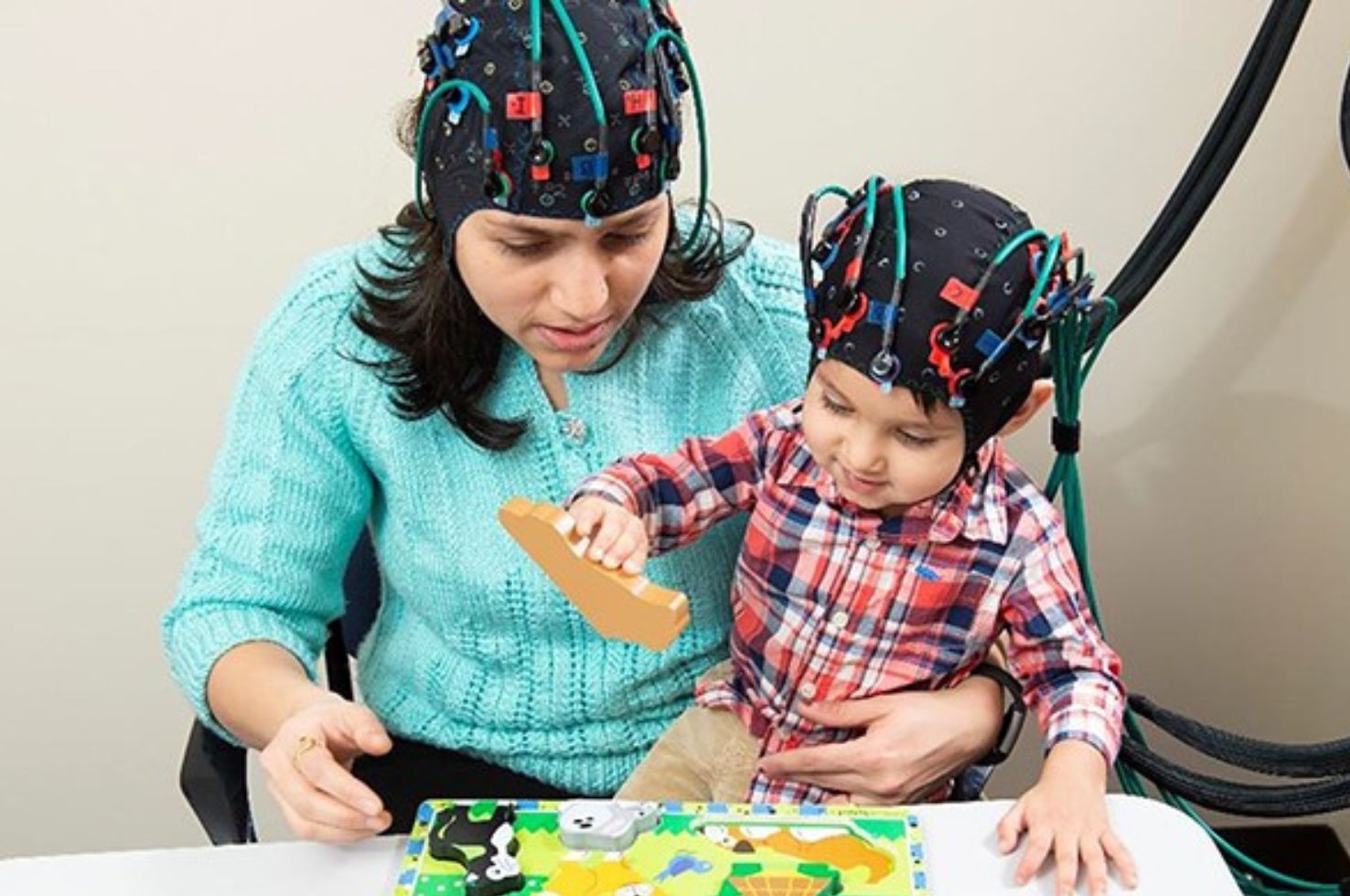Social Cognitive and Affective Neuroscience: Mother–Child Neural Synchronization Is Time Linked to Mother–Child Positive Affective State Matching

In the first years of life, affective state matching, in which mothers and children imitate and elaborate on each other’s positive emotional expressions—through shared smiling, mutual eye gaze, back-and-forth vocalizations, and joint play—is a hallmark of early mother-child interactions. In addition, positive affective state matching also appears to promote child emotional self-regulation through the process in which mothers and children dynamically alter their emotions, behavior, and physiology in the context of one another. However, less is known about whether affective state matching may also be associated with synchronization of mother-child neural systems during the sensitive first years of life.
A group of investigators including Judith Morgan, PhD (Associate Professor of Psychiatry and Psychology); Erika Forbes, PhD (Professor of Psychiatry, Pediatrics, Psychology and Clinical and Translational Science); and Heather Joseph, DO (Assistant Professor of Psychiatry and Pediatrics), from Pitt Psychiatry, evaluated whether greater positive affective state matching between mothers and their very young children (ages 1-3 years old) would be associated with greater synchronization of brain activity in neural regions involved in positive emotion expression and regulation.
Mothers’ and children’s brain activities were assessed simultaneously while engaging in dyadic play, using near-infrared spectroscopy to observe the anterior medial prefrontal cortex (a neural region that has been implicated in emotion expression, affectionate touch, and social cognition); the lateral prefrontal cortex (a regulatory region that promotes both down- and up-regulation of emotion); and temporoparietal junction (a social region involved in mentalizing or the ability to understand the thoughts and feelings of others). The scientists also investigated how child age may moderate the association between positive affective state matching and mother-child neural synchrony.
In a study recently published in Social Cognitive and Affective Neuroscience, the investigators reported that greater positive affective synchrony, in which mother and child showed similarly high levels of positive affect but not similarly low levels of positive affect, was related to greater synchrony in medial and lateral frontal and temporoparietal regions. Age moderated associations between mother and child neural activities but only during moments of high positive affective state matching.
“Prior work has already established mother-child co-regulation of child emotional behavior in the first years of life. Our study is among the first to demonstrate that positive, synchronous mother-child play in the first years of life supports mother-child co-regulation of child neural activity,” said Dr. Morgan, the study’s corresponding author.
Mother–child neural synchronization is time linked to mother–child positive affective state matching
Morgan JK, Santosa, H, Conner KK, Fridley RM, Forbes EE, Iyengar S, Joseph HM, Huppert TJ
Social Cognitive and Affective Neuroscience, Volume 18, Issue 1, 2023, nsad001, https://doi.org/10.1093/scan/nsad001
